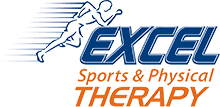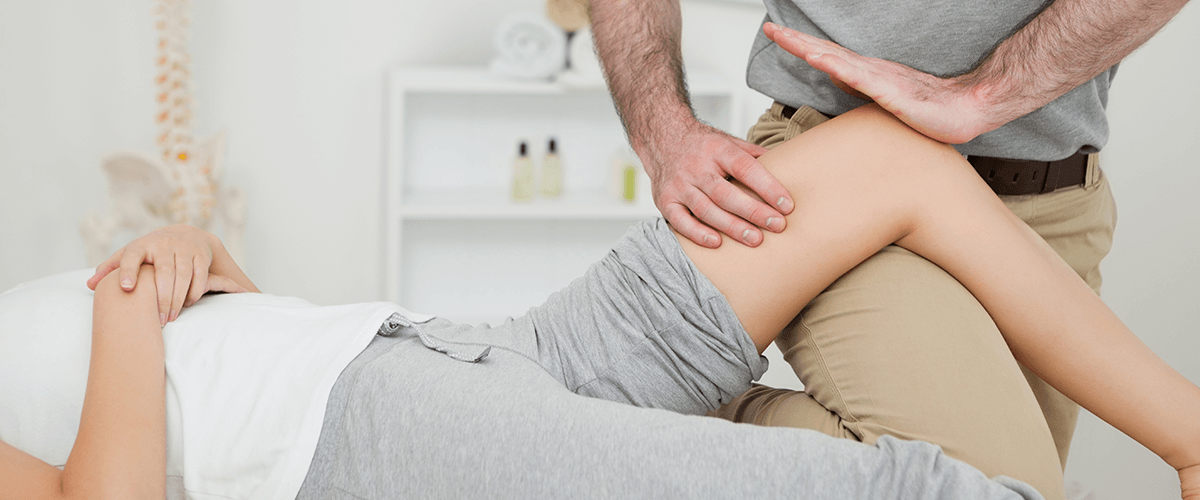For many physical therapists, it’s all hands on deck. They use manual therapy techniques on soft tissue and joints that are intended to modulate pain, reduce inflammation, increase range of motion and reduce restriction. Hands on therapy is also intended to decrease edema, enhance health, remediate body functions and structures and to maintain physical performance. But, before performing any type of hands on treatment, a physical therapist will perform a full assessment of bone and muscle and blood and nerve supply in the affected area. Depending on that assessment, a physical therapist may perform some or a combination of the following types of manual physical therapy. You can feel confident that a physical therapist will choose the best manual therapy for your condition.
Orthopedic Manual Physical Therapy (OMPT)
The OMPT system utilizes knowledge of the neuroanatomical system and biomechanics to systematically and comprehensively examine, differentially diagnose, and treat the root cause of pain and dysfunction. OMPT trained therapists have completed a 2 year residency program specializing in advanced training in manual mobilization, manipulation and functional massage for the extremities and spine.
What is joint mobilization?
You have hundreds of joints in your body, which come in a variety of types and sizes (such as a “hinge joint” in your elbow, a “ball and socket joint” in your hip, or a “saddle joint” in your thumb). Joints, formed by the articulating surfaces of two or more bones, depend on a combination of both stability and mobility in order to help you function efficiently and comfortably. Importantly, joints are supported by a wide variety of physiological structures including capsules, ligaments, tendons, cartilage, and muscle fibers, all of which can become injured and potentially benefit from physical therapy services, including a service known as joint mobilization.
Skilled joint mobilization involves providing the correct amplitude, velocity and direction of force to passively move restricted joints and to restore normal movement. The joint is moved in a manner that the patient cannot do on their own.
Indications & Benefits of Joint Mobilization
The specific type, magnitude, speed, and frequency of joint mobilization performed depends on several factors, including the goal of treatment, the type of joint being targeted, and even your own unique anatomy. The primary effects of joint mobilizations include pain reduction, improved range of motion, and improved quality of joint movement itself (known as arthrokinematics).
What conditions can benefit from joint mobilization?
Sometimes, a joint can become irritated, swollen, or misaligned as a result of injury, stress, poor posture, repetitive movement, or even as a result of age-related wear and tear. When this happens, the joint may not move correctly and become stiff and painful. Nearby structures including muscles, tendons, and ligaments may become tense or injured as a compensatory effect of trying to support or stabilize the injured joint. This can lead to muscle weakness or even impingement and damage to nearby nerves.
Joint mobilization isn’t appropriate for all patients, and our skilled and experience physical therapists can determine if it’s right for you or a loved one. Specific conditions which our physical therapy team successfully manage with joint mobilizations include:
- Arthritis (especially of the shoulder, spine, elbow, hip, and knee)
- Rotator cuff tears and sprains
- Adhesive capsulitis (frozen shoulder)
- Medial or lateral epicondylitis (golfer’s or tennis elbow, respectively)
- Ankle sprains
- Sciatica and other types of nerve impingement syndromes
- Facet joint locking and other types of spinal misalignments
- Whiplash
Joint issues are often the hidden underlying factors driving other types of injuries and ailments including muscle strains, ligament damage, and bursitis, so this is why we strongly encourage you to consult with a physical therapist with any type of acute or chronic dysfunction. Your joints could be contributing to your pain without you even realizing it!
What should I expect during a joint mobilization treatment with a physical therapist?
If you come to see a physical therapist at our clinic with acute or chronic joint pain, then you can first expect to be thoroughly examined on an initial examination. We’ll be assessing and evaluating everything from your range of motion, strength, coordination, pain level, posture, and even relative tissue tension and feel in order to help us devise an accurate diagnosis. Based on our exam findings, as well as the information we glean from questioning you about your current and past medical history, we’ll be able to devise a customized treatment plan to meet your unique needs. Since joint mobilization techniques have been shown to be effective for a variety of conditions, we very well may decide to implement this type of manual therapy in your plan of care.
To prepare for a physical therapy session with joint mobilization, be sure to wear comfortable and loose-fitting clothing. Your therapist will need to be able to see or at least easily palpate (feel) the specific joint he or she is mobilizing (keeping in mind of course, that your privacy and comfort is of utmost concern to our staff). Your physical therapist will be sure to offer you clear details on how to sit or lie during the session, what you should expect to feel, as well as what to do following your session in order to maximize effects and prevent recurring pain or dysfunction. To complement and optimize the effects of joint mobilizations, we’ll also instruct you in additional services which may include therapeutic exercises for strengthening and range of motion, modalities, and postural and neuromuscular retraining.
Are you wondering if joint mobilization is right for you? Call our clinic today. Our friendly staff is happy to answer your questions, help you schedule an appointment, and educate you about our wide range of physical therapy services we offer. Drug-free relief from your joint or muscle pain is possible, so give us a call to get your healing journey started today.
Strain-Counterstrain
This type of manual treatment focuses on fixing abnormal neuromuscular reflexes that are causing painful tender points. The physical therapist locates the patient’s position of comfort, holds it for 90 seconds and asymptomatic strain is induced by stretching. It’s a gentle technique for those with acute back problems and tolerated well by patients. Get rid of back pain with strain-counterstrain therapy.
Soft Tissue Mobilization / Functional Massage
Muscles play an important role around the joints. If there is too much tension, there can be muscle spasm and joint dysfunction. With soft tissue mobilization, the fibrous muscle tissue is broken up. Typically, this is scar tissue or adhesions. This procedure is often applied to the musculature surrounding the spine and extremity joints and consists of deep pressure and rhythmic pressure. A layer-by-layer assessment is done by the physical therapist to localize the affected area. Soft tissue mobilization can also involve placing a traction force on the affected area. Functional massage is similar soft tissue technique that incorporates joint motion with massage to treat musculotendonous pain and dysfunction. All around, soft tissue mobilization has helped reduce pain and remove restricted movement in many patients.
High Velocity, Low Amplitude Manipulation
This manual therapy technique is a bit more aggressive than the others. Its goal is to allow the joints to open and close more effectively to restore motion. The joint is taken to its restrictive barriers and stretched. However, it does not move the joint past its anatomical limit, so there is no pain or structural damage. This technique specifically increases range of motion.
Muscle Energy Techniques
Muscle energy techniques are implemented by a physical therapist to lengthen shortened muscles and to mobilize restricted joints. A voluntary contraction is utilized against a controlled counterforce applied from the physical therapist from a specific direction and position. It’s an active procedure and generally well tolerated by patients.
In addition to manual therapy, those patients in pain are encouraged to also participate in other treatments, such as an exercise program. This usually includes strengthening exercises and stretching and low-impact aerobic conditioning. A physical therapist will provide exercises during treatment and also provide you with home exercises. With the proper hands on therapy and exercises, pain should be lessened and range of motion should be restored.
If you’re in pain or have limited activity to do a medical condition or injury, a physical therapist can be your lifesaver. Contact Us today at St. Louis, Creve Coeur, Ellisville, Saint Peters, O’Fallon, Saint Charles, Warrenton & Wentzville, MO Centers to schedule an appointment for a consultation and comprehensive evaluation. Our physical therapists are certified, trained and experienced. They’ve helped many on the road to recovery and can help you too.

